Rattling those shady pots & pans sales
July 22, 2010
It was time to blow the lid off the scam.
After receiving numerous complaints, investigators with the county’s Department of Consumer Affairs decided to go undercover to prove that agents of a direct-sales cookware company were making outlandish claims about their expensive pots and pans. Among those claims: that the company’s cookware could help prevent cancer, diabetes and Alzheimer’s.
Posing as potential customers, the investigators secretly videotaped agents for Rena Ware International Inc. employing high-pressure scare tactics, claiming that people might get sick unless they bought kitchenware sets costing from $1,000 to $4,000.
“The saddest thing is that the customers were mostly low income people, and many of them took on huge debt,” said Rigo Reyes, the department’s acting director who took part in the undercover operation.
The Rena Ware investigation, conducted with the state’s attorney general and the Los Angeles County district attorney, led to a civil suit against the company that was settled earlier this month. The Redmond, Wash.-based company admitted no wrongdoing but agreed to pay $625,000 in penalties, costs and fees, including $250,000 in consumer refunds and $100,000 to hire an independent monitor for a year.
“Their illegal high pressure sales tactics preyed on the fears of vulnerable Californians,” Attorney General Jerry Brown, the Democratic candidate for governor, said in a statement.
In a statement after the settlement was announced, Rena Ware said it had cooperated fully with the investigation and promised to “remain vigilant against fraudulent and unethical sales tactics.”
The undercover job was one of a half-dozen that Consumer Affairs investigators undertake each year, usually targeting auto dealerships or immigration consultants. More often, the department’s 15 investigators attempt to resolve consumer complaints about landlords, small businesses, real estate-related scams, identity theft and elder abuse. They sometimes refer cases to the Los Angeles city attorney, the district attorney or, when they include complaints from other counties, the attorney general.
Rena Ware International, a privately-held direct sales firm, sells cookware and water purifiers in the U.S., Europe, Asia and Latin America through an independent sales force it trains and supplies. In California, where the company is popular in the Latino community, the undercover meetings were conducted in a mix of English and Spanish.
“Consumer Affairs’ work was critical in this case,” said Michele Van Gelderen, the state deputy attorney general who prosecuted the case. “Their investigation obtained first-hand evidence of the wrongdoing, coupled with extensive consumer interviews that showed the practices were widespread.”
The Rena Ware investigation started in mid 2008, after an executive in a rival company, which was being investigated by Consumer Affairs, complained that his firm was being unfairly targeted.
“He said there were companies that were worse than his, and I asked which one,” Reyes recalled. “He said Rena Ware.”
In response, Consumer Affairs re-interviewed people who had complained about Rena Ware in recent years and were told that the company’s agents scared consumers into thinking that other companies’ pots and pans were full of dangerous contaminants. For example, the sales people allegedly claimed that Teflon coatings were made of recycled tires and could cause cancer.
The sales force claimed that Rena Ware’s stainless steel cookware helped ward off diseases because it was made of “the same material doctors used to perform surgery,” Reyes said. They also contended that the pans could remove harmful hormones from chicken.
Reyes’ undercover team set up meetings in July 2008 with three Rena Ware sales teams to find out whether such unproven claims were widespread.
“Companies always say the sales people are independent and it has no control over them,” Reyes explained. “We wanted to show that it’s a company problem.”
Using an investigator’s home in Maywood, Reyes and investigator Maggie Becerra pretended to be husband and wife while other investigators played the roles of friends or relatives. Hidden cameras recorded the action.
The meeting sequences were remarkably similar. The Rena Ware sales teams, often husbands and wives, always conducted a “demonstration” by preparing a meal that quickly turned into a sales pitch.
At the first meeting, Reyes and Becerra agreed to pay $2,136 for cookware and a countertop electric stove, supposedly for Becerra’s diabetic mother. At a meeting with another sales team, Reyes bought a 17 piece set for $2,238, ostensibly for his elderly grandmother.
At the first meeting, Reyes and Becerra repeatedly asked about the company’s interest rates.
“They kept saying it was 2%,” Reyes recalls, but failed to say that figure actually was the monthly rate. The annual rate was a steep 21.5%, adding hundreds of dollars to the purchase price.
During the second meeting, the sales woman offered to help Reyes obtain illegal identification after he said he wouldn’t qualify for Rena financing because he was in the U.S. illegally.
According to Reyes, the saleswoman first suggested that he could use a friend or relative’s social security number. When he declined, “she said she could take me to a place in L.A. where I could buy a whole package of false ID,” recalled Reyes, who declined that offer, too. Investigators concluded that identify-fraud proposal was the woman’s own idea and not company-wide practice.
Reyes said that he understands how powerful the appeal to health and family can be; he said his own uncle bought Rena Ware some years back. But, he said, consumers need to be more skeptical.
“If some guy says this will cure cancer, that it’s a miracle pot, you can’t just believe it,” Reyes said. “Consumers need to learn how to say no.”
Posted 7/22/10
Sunset Bridge, the early years
July 22, 2010
Say goodbye to the Sunset Bridge over the 405. The overcrossing—a symbol of California’s freeway-building love affair that profoundly affected the evolution of Los Angeles—was completed in 1956.
On Friday, after 54 years of loyal service, the bridge will start coming down, to be rebuilt as part of another ambitious transportation initiative—the $1.034 billion project to construct a 10-mile northbound carpool lane on the 405 Freeway, along with a wide range of other improvements.
The bridge cost $722,657 to build over what was then called the Sepulveda Freeway. California Governor Goodwin J. Knight was on hand to address the “groups of civic leaders, businessmen and residents of nearby communities” who turned out for the 1954 groundbreaking. “Highways are no longer a luxury, but a necessity to move goods and people, the Governor told them,” according to a report at the time in a publication called California Highways and Public Works.
The publication also noted: “Early development of the Sepulveda Freeway is of importance to the west and south coastal sections of the Los Angeles metropolitan area as well as to afford traffic relief on existing highways and streets through the San Fernando Valley leading into and through central Los Angeles, the Governor stated.”
On the question of traffic relief, at least, some things never change. But Los Angeles itself has—dramatically—as these historic Caltrans photos of the Sunset Bridge show.
Now, more than a half-century later, six nights of demolition work on the south side of the bridge are expected to start after midnight Friday. The tool of choice to bring down the bridge piece-by-piece is the hoe ram—basically a crane with a huge jackhammer attached. There will be three of them working Friday night in a work area that will be swaddled in 6,000 square feet of sound blankets that contractors hope will help muffle the noise. Anyone with questions or concerns is encouraged to call the project hotline, (213) 922-3665.
Posted 7/22/10
If we build it, they will board
July 22, 2010
For decades, the conventional wisdom was that L.A. drivers would never loosen their grip on their steering wheels to embrace public transportation, no matter how infuriating the traffic.
But this summer, as we celebrate the 20th anniversary of the Blue Line light rail between downtown L.A. and Long Beach, we find that the people of Los Angeles County have proven the pundits wrong time and time again. They’re not just riding; they’ve put real money behind the effort to transform our region’s transportation system.
More than a billion boardings have taken place since the Blue Line inaugurated our Metro Rail system two decades ago—dramatic evidence of how our region is beginning to transform itself from a capital of car dominance in the last century into a multifaceted transportation smorgasbord in this one.
This cycle of growth underscores one of the most important lessons of the last 20 years: that the more you build the system, the more of a system you build.
In other words, what we’re creating is more than the sum of its parts. Our transportation system becomes exponentially more useful and popular with the addition of each new element. And small beginnings can grow into big successes. When the Metro Red Line first opened in 1993, L.A.’s first modern subway may have underwhelmed some with its quick, short ride from downtown to MacArthur Park. Now it’ll take you to Hollywood and Vine, Universal City and beyond.
Then there’s the Orange Line, the popular rapid transit busway that runs from Warner Center to North Hollywood and now is being extended northward to Chatsworth. In the line’s first year of operation, more than 30% of the riders who flocked to the line turned out to be newcomers to our public transportation system.
And each alternative we offer adds up to real hours restored to the lives of real people, like the woman who came up to me after the Orange Line opened and emotionally expressed her thanks for the public transportation options that now let her get from her home in the Valley to her job in Long Beach in far less time.
These new options gave her back an hour and a half each day—time she can now spend with her kids.
To make that kind of progress a reality for more people, our region found an important ally in 2008: the ballot box of Los Angeles County.
Even as the economic recession was crashing in on us, voters had the wisdom to overwhelmingly approve Measure R. That provided a half-cent sales tax revenue stream for 30 years to fund transportation projects that are reshaping transportation as we know it in Los Angeles.
Talk about a game changer.
When Phase 2 of the Expo Line project breaks ground next year, the $1.5 billion project will be bankrolled largely by Measure R funds. Slated for completion in 2015, the entire light rail line, paralleling the Santa Monica Freeway, will connect riders from downtown to Exposition Park and USC to Culver City and Santa Monica. It will stand as the first public mass transit project to hit the west side of Los Angeles since the Red Car system was dismantled in the 1950s.
Thanks to Measure R, we are solidly on the right track—with projects across the county that will improve the quality of life for everyone, wherever they live or work.
And now we have the opportunity to really put the pedal to the metal, so to speak, on many of those projects. Under the 30/10 initiative proposed by Mayor Antonio Villaraigosa and backed by Metro’s Board of Directors, of which I am a member, a dozen key projects would be completed in 10 years—instead of 30—by taking out low-interest federal loans to be repaid with Measure R revenue.
The 30/10 plan is not a sure thing, but it’s the right thing—not just for the sake of commuters but for the sake of our Southern California economy, which badly needs the jobs these transit projects would provide.
This accelerated transit building plan is not a magic bullet to solve all of our traffic congestion woes. Realistically, those will be with us as long as there are too many cars for our region’s finite freeway space.
But if we can get the federal assistance we need to make 30/10 a reality, we will be able much more quickly to offer people an ever-increasing set of transit alternatives, including a Green Line that extends to LAX, a regional connector downtown, a Gold Line that runs to Azusa and points east, a subway to Westwood by the end of the decade, and perhaps even a light rail that runs along the 405 Freeway to the San Fernando Valley.
Those projects are part of a new Los Angeles transportation paradigm–one in which trains, buses, bicycles and pedestrians all are important players as we find alternatives to the congested roadways that have eroded our quality of life and limited our access to jobs and cultural attractions.
So when I attend Metro’s official salute to the Blue Line’s 20th anniversary on Friday morning, I will honor all that we’ve accomplished, reflect on all we’ve learned and get ready for all that comes next.
And for our next 20 years, how’s this for a motto: Full speed ahead.
————————–
For a striking visual depiction of how far we’ve come since the Blue Line made its inaugural voyage, check out this interactive timeline map from Metro.
Posted 7/22/10
The beat goes on—but with new rules
July 21, 2010
The Los Angeles Coliseum Commission on Friday sent a strong signal that it would like to remain in the rave business but only if promoters of the massive electronic dance events can control them more tightly to avert tragedies like last month’s apparent drug death of a 15-year-old girl.
The commission, which oversees the Los Angeles Memorial Coliseum and Sports Arena, approved 11 recommendations aimed at better protecting the health and safety of concertgoers during three upcoming festivals, or raves, scheduled for the Sports Arena between August and New Year’s Eve. On the advice of its lawyers, the commission is allowing those events to move forward because of contractual obligations.
The commissioners also voted to continue a moratorium on signing any new contracts with festival promoters until it can be determined whether the more restrictive rules—including an enforced age limit of 18—substantially reduce the kind of problems that marred last month’s Electric Daisy Carnival at the Coliseum.
The two-day event drew 185,000 people and ended with dozens of attendees being transported to area hospitals, many for overdoses related to the drug Ecstasy, apparently including teen Sasha Rodriguez, who later died.
Among the many speakers who appeared before commission on Friday was a representative of Rodriguez’s parents. In a statement, the couple urged the commission to “put our children’s health and safety ahead of profits.”
Los Angeles County Supervisor Zev Yaroslavsky, a commission member who first called for the moratorium after Rodriguez’s death, said he was unhappy that the panel was legally locked into the upcoming concerts. He also said he’s “very pessimistic that they can be done more safely.”
“But the next best thing is that we have a new set of rules and regulations that we can enforce,” said Yaroslavsky. He then bluntly warned promoters of the upcoming festivals that they’re “on probation”—in control not only of their business futures but of the lives of the young people who attend their events.
The new health and safety rules—endorsed by Electric Daisy Carnival’s promoter, Insomniac, Inc.—were contained in a preliminary report prepared by an outside law firm, Miller Barondess, headed by attorney Skip Miller. On Friday, after an hour-long closed session, he provided highlights of the 14-page report during the commission’s public meeting.
Among other things, Miller’s report provided a historical perspective of the underground roots of raves and their lucrative explosion into the mainstream, now packing major venues across the nation, including the Coliseum and Sports Arena. Since 1998, according to the report, those two venues have hosted 37 electronic music festivals, drawing an audience of more than 1 million people.
With that kind of draw, the festivals have become crucial to the economics of the Coliseum. Miller’s report disclosed, for example, that the historic stadium grosses approximately 28% of its revenue from such events as Electric Daisy Carnival, Monster Massive, Together As One and Love Festival.
What’s more, according to the report, the Coliseum hired more than 4,400 people to provide services in connection with the Electric Daisy Festival. Miller also noted that local businesses have profited as well from the event, which his report contends was exceptionally well planned—an observation supported by Los Angeles police and fire officials during testimony Friday.
LAPD Commander Andrew Smith, who was responsible for the department’s personnel within the Coliseum, said planning for the event was “every bit as thorough as for a Lakers’ parade.”
With so much money on the line, the Coliseum Commission has been placed in a difficult spot, caught between these financial realities and the need to assure the public that safety issues trump all else.
The sensitivity of that task was brought into stark relief during the hearing’s most dramatic moment, when Debbie Macaluso and her 19-year-old daughter, Aisha Marmer, took the microphone for their allotted 60 seconds of testimony.
Macaulso recounted how her daughter had overdosed on Ecstasy during last year’s Electric Daisy Carnival. She ended up on life support for two months and suffered four strokes, the mother said, her voice cracking. “It’s all about money, not the kids,” she said of the raves.
Aisha, who has been forced to undergo extensive speech therapy, said simply of the raves: “I just think it’s not a safe thing.”
Los Angeles City Councilman Bernard Parks, also a member of the Coliseum Commission, said the public should not be mislead into thinking that the new rules, which call for better health precautions and more drug education, are a cure-all for the problems plaguing raves.
“There are no perfect events,” said the former LAPD chief. “I don’t want to overplay what we can do.”
Posted 7/16/10
Get smart about whooping cough
July 21, 2010
 If you’re the parent of an infant, the news coming out of Los Angeles County’s Department of Public Health these days might be frightening. Since the beginning of the year, three babies have died from pertussis, or whooping cough, with the most recent death disclosed on Tuesday.
If you’re the parent of an infant, the news coming out of Los Angeles County’s Department of Public Health these days might be frightening. Since the beginning of the year, three babies have died from pertussis, or whooping cough, with the most recent death disclosed on Tuesday.
In Los Angeles County this year, there already have been 289 possible cases of whooping cough, according to health officials, soaring past last year’s total of 156. Since 2004, more than 80% of whooping cough deaths have been in infants younger than three months.
But the good news is that there’s something you can do to protect yourself and your loved ones. Get vaccinated.
“It’s important for all kids to be up to date and particularly for adults who take care of infants,” said Michelle Parra, director of the Immunization Program for the public health department. Because infants under the age of six months cannot be vaccinated, she said, they’re particularly vulnerable to whooping cough.
“If one message is to be heard, it’s that young babies who can’t be immunized are in need of protection and that’s why people around them need to be immunized,” Parra said. “We call it the cocooning effect. If you vaccinate everyone around the infant…then essentially you are protecting the infant.”
While the thought of getting a shot is never pleasant, catching whooping cough is much worse. “Your system is so distressed you cough to the point where you are convulsing and vomit,” Parra said.
“If you are an adult or an older person with a cough, you should not be around young babies,” she said. “You should go immediately to get a diagnosis because it might just seem like a regular cough. But if it’s whooping cough it’s a virus that can be very deadly for babies.”
According to Parra, pertussis is a cyclical illness. “It kind of comes in waves. The last peak was in 2005.”
The current outbreak, she said, has a connection of sorts to the rising number of mumps cases in recent months.
“We’re in a period where there’s an increase in parents who are choosing not to vaccinate their children, which leads to higher rates of disease regardless of what disease it is,” Parra said. “There are a lot of parents who have never seen the diseases. They have this perception that the disease doesn’t exist anymore and vaccines are no longer necessary.”
(For information from the county’s Department of Public Health on how to minimize pertussis risks and obtain vaccinations, click here.)
Posted 7/21/10
Framing a career
July 21, 2010
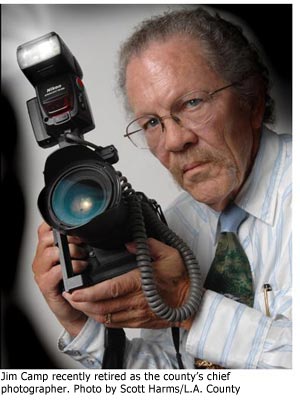 When Jim Camp joined Los Angeles County’s photo staff, he drew a royal flush—with emphasis on royal.
When Jim Camp joined Los Angeles County’s photo staff, he drew a royal flush—with emphasis on royal.
In his 34 years of service, Camp photographed the Queen of Thailand (“Funny story about that,” he said, describing the perfect protective triangle formed around her by three ladies in waiting.) And the King of Samoa (“Funny story, too,” involving men in skirts and tuxedo jackets with machine guns.) And assorted British royals from Prince Philip and Prince Charles to Fergie, the Duchess of York.
There was Hollywood royalty, too, like Kirk Douglas, as well as presidential royalty, from Ronald Reagan to Bill Clinton.
And, of course, there was another kind of king. By which we mean Kenny Hahn.
“He was the king of the photographs,” Camp said outside the Hall of Administration after receiving a scroll Tuesday honoring his years of work and congratulating him on his recent retirement. The late supervisor Hahn was actually part of Camp’s first photo assignment for the county: “It was the Greek Orthodox Pope, and he landed at LAX and Kenny Hahn was there to meet him.”
On Tuesday, after years of shooting countless “grip-and-grins,” showing up at infinite numbers of rubber chicken dinners and shadowing some of the most powerful local politicians in the world as they interacted with the great and near-great, Jim Camp was suddenly on the other side of the lens.
And he didn’t much like it.
“I didn’t want to do it because basically I don’t like that side of the table,” he said. “I’ve spent too many years on the other side. But Mike wouldn’t let me go.”
That would be Supervisor Michael D. Antonovich, one of 12 county supervisors whose every public move has been chronicled by Camp and his staff during the course of his county career, which started in 1976.
Antonovich publicly praised Camp for his “excellent service and dedication” to the county and cited some of his biggest accomplishments: overseeing the county’s transition to digital photography and beginning the process of archiving its “irresistible historical images.” As chief photographer, Camp supervised a unit with three photographers and two student workers.
But the heart of the job was interacting with the supervisors themselves—and witnessing the worlds they walk in.
“They’ve each had their goods, their bads, their little secret cues for us,” Camp recalled. He said that whenever Hahn would say “Just do the best you can,” he actually meant something like “Stop fussing and just shoot the picture already.”
“Good Lord, some of the stuff was just incredible,” Camp reminisced Tuesday, before launching into one of his trademark anecdotes, this one about a demonstrator who rushed the Board of Supervisors at a meeting but was stopped cold after he crashed headlong into an enormous sheriff’s deputy blocking his way. “It was one of these deputies who are wider than they are tall,” he said. “He picked [the demonstrator] up by the belt and walked out of the room with him.”
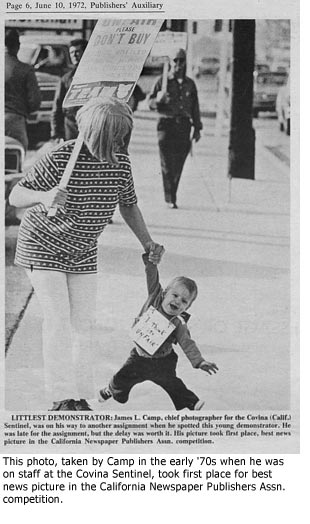 So did that turn into an action photo of government at work? No way. “We had to be careful what we shot and what we didn’t shoot. We were there to cover the board, not news.”
So did that turn into an action photo of government at work? No way. “We had to be careful what we shot and what we didn’t shoot. We were there to cover the board, not news.”
It was a big transition for someone like Camp, now 71, who’d been a photographer for the now-defunct Covina Sentinel and the San Gabriel Valley Tribune before joining the county.
“When I was shooting news, I shot what I wanted,” he said. “Now I had to make the board members look good, no matter what.”
There were perks, of course—like being selected to photograph Reagan’s visit to the county in 1982 and being assisted by a Secret Service agent who helped him navigate walking backward down a hall while shooting photos every step of the way. “His job was, I guess, to keep me from making a fool out of myself.”
Camp was born in Michigan but grew up in California. He joined the Navy right out of high school and spent 59 days in a submarine submerged off the coast of Vladivostok during the Cold War (but that’s another story). He started with the county as a microfilm technician, and first came to the photo department on a temporary assignment. He worked a lot in the lab at the beginning but soon enough was out shooting photos, day and night.
It was the kind of schedule that could wreak havoc with the home life.
“What home life?” Camp said. “Eight to five every day, plus nights, weekends, holidays—whenever we were needed…”
“We were headed to Wyoming for one of my rare vacations, and they ran out of people to shoot an event out in Newhall,” Camp said. “I packed up the family in the camper but I stopped in Newhall and shot the event.”
Camp’s wife, Diane, who was in the audience for Tuesday’s presentation, served as his “reality check” during all those years of service, including times when “I’d get wound tighter than a tick.”
Also present Tuesday was his 15-year-old grandson Nick, who lives with Jim and Diane in Glendora.
Camp thanked his county family and his actual family for “making quite an adventure out of this.” And then he stepped outside to talk about what’s next—more time for another kind of shooting (target practice) and to finally purchase a piece of equipment that the county had provided for so many years.
“I’ve got to buy a camera,” he said.
Supervisors to honor “Soloist” Ayers
July 15, 2010
 Nathaniel Ayers, the mentally ill homeless musician whose story was told in the book and movie “The Soloist,” will be honored by the Board of Supervisors at their meeting on Tuesday.
Nathaniel Ayers, the mentally ill homeless musician whose story was told in the book and movie “The Soloist,” will be honored by the Board of Supervisors at their meeting on Tuesday.
Supervisors will present Ayers, 59, with a scroll in recognition of his upcoming trip to represent Los Angeles County and people with mental illness at a White House celebration of the Americans with Disabilities Act. The celebration marks the 20th anniversary of the landmark legislation that ensures equality for disabled Americans.
Ayers was a talented double-bassist living on Skid Row with schizophrenia when Los Angeles Times columnist Steve Lopez befriended him. The friendship became the basis for the movie starring Jamie Foxx and Robert Downey Jr.
When he goes to Washington for the July 28 celebration, Ayers will carry a second scroll from the Board of Supervisors for President Obama, which commends him for, among other things, his commitment to the mental health community.
Ayers will travel to Washington with his sister, Jennifer Ayers-Moore, who founded the Nathaniel Anthony Ayers Foundation, which raises money for arts programs serving the mentally ill.
Posted 7/15/10
County green program fading to black?
July 15, 2010
The county’s AB 811 loan program looked like a great way to help L.A. County property owners go green.
Named after 2008 California legislation, AB 811 created an innovative way for local governments to help home owners finance energy-saving retrofits—from air-tight windows to solar panels—through assessments on property tax bills. More than 50 cities in the county signed on to the plan, which officials also predicted would create thousands of green-collar jobs.
But now, despite all the plans and hoopla, the county’s AB 811 energy program has been short circuited, along with similar programs in about 20 other states. The reason: federal mortgage regulators have called such property tax-based programs a threat to the safety of home mortgages.
In a July 6 statement, the Federal Housing Financing Authority said that many energy retrofit programs that rely on property tax assessments “present significant risk to lenders and secondary market entities.” Since FHFA regulates Fannie Mae, Freddie Mac and 12 Federal Home Loan Banks, the federally-chartered corporations that own most home mortgages, their concerns effectively halted programs everywhere.
In light of the FHFA’s resistance, the Board of Supervisors unanimously passed a motion this week by Supervisor Zev Yaroslavsky calling for a halt or reduction in spending on the AB 811 program. The motion urged the Chief Executive Office, the Internal Services Department and Office of Sustainability to push for legislative solutions at the state or federal level to answer the federal mortgage regulator’s objections.
California Atty. Gen. Jerry Brown, meanwhile, filed suit Wednesday in federal court against FHMA, Fannie Mae and Freddie Mac in an effort to restart the program. Brown, in a San Diego press conference, accused federal mortgage officials of engaging in “regulatory strangulation of the state’s grass-roots program.”
The suit argues Fannie Mae and Freddie Mac rules do not bar PACE-style assessments. In the suit, Brown, who is the Democratic candidate for governor, is asking the court to issue an injunction barring the mortgage corporations from “taking any adverse action against any mortgagee who is participating, or may participate, in a PACE program under California law.”
The White House and U.S. Department of Energy favored the so-called Property Assessed Clean Energy, or PACE, programs but were unable to convince federal mortgage regulators to get on board. (A rundown on the debate from the Department of Energy can be found here.)
The sticking point came over the arcane but important question of which loan would be paid first in case of default. Because the energy retrofit loans are classed as property-tax assessments, they take the “first lien” position and have priority over a home’s mortgage when the worst happens.
First lien priority doesn’t upset mortgage lenders when the property assessments are small and paid off quickly, as when governments tap residents to pay for sewers. But when the assessments amount to tens of thousands of dollars paid over many years, the energy loans could “disrupt a fragile housing market and…raise safety and soundness concerns,” the FHFA concluded.
The new loan restrictions most directly affected home loans. Loans for retrofits of apartments or businesses may be able to go forward, pending further review by the county.
The loan program was to be the centerpiece of the Los Angeles County Energy Program, which also included consumer education, facilitation rebates from utility companies for retrofits and creation of one stop shops to streamline permitting for energy efficient construction. The AB 811 setback won’t derail those efforts.
Howard Choy, general manager of the county’s Office of Sustainability who is responsible for setting up the county’s energy program, remains optimistic that the setbacks are temporary.
“From the folks I’ve talked to, we think this issue is going to get resolved,” said Choy, perhaps in federal legislation introduced in 2011. “This type of program has no conservative or liberal slant to it. It’s all about using loans to homeowners that will be paid back, and it’s going to create jobs.”
Posted 7/14/10
Smog? There’s an app for that
July 15, 2010
 Just think of it as sigalert.com for your lungs. What the South Coast Air Quality Management District bills as the nation’s first fully featured air quality app for smart phones is now available, free of charge and just in time for the worst of our region’s summer smog season. Enter a location and watch as a little map is bathed in the color corresponding to the air quality there. (In order of best to worst: green, yellow, orange, red or (gasp) purple.)
Just think of it as sigalert.com for your lungs. What the South Coast Air Quality Management District bills as the nation’s first fully featured air quality app for smart phones is now available, free of charge and just in time for the worst of our region’s summer smog season. Enter a location and watch as a little map is bathed in the color corresponding to the air quality there. (In order of best to worst: green, yellow, orange, red or (gasp) purple.)
It also has a cool calculator to determine your family’s carbon footprint, a locator for the nearest alternative fuel station and tips on what you can do to improve air quality. It even lets you drop a dime on polluting vehicles with a feature in which you can record and submit information on that smoke-spewing clunker in the next lane.
Last year, this region had more than 120 days of unhealthy air quality, and things are already on track for a similar number this year, with 46 unhealthy days reported so far, compared to 49 at the same time last year. The villain of the summer smog season is ground level ozone. One of the heroes just might be this app.
Watch a video on how it works here, and download from the Apple App Store.




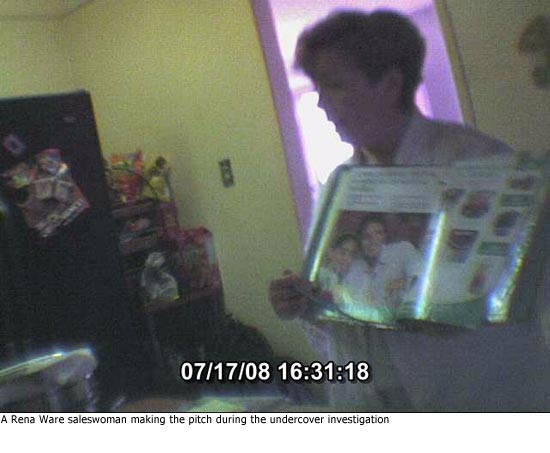
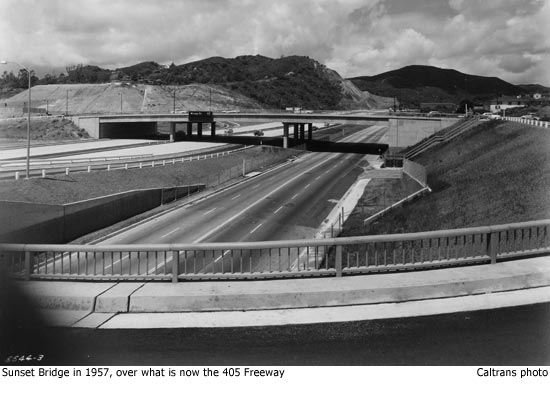
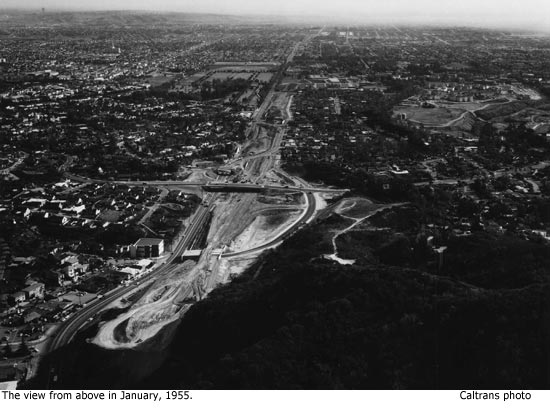
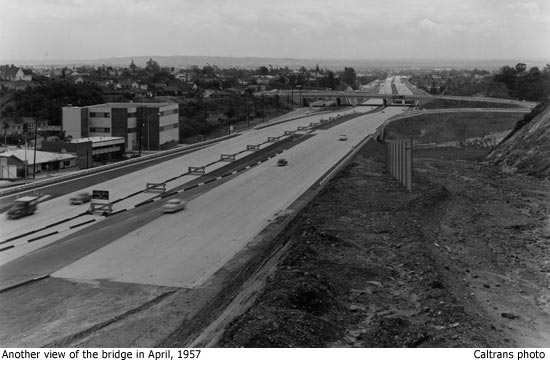


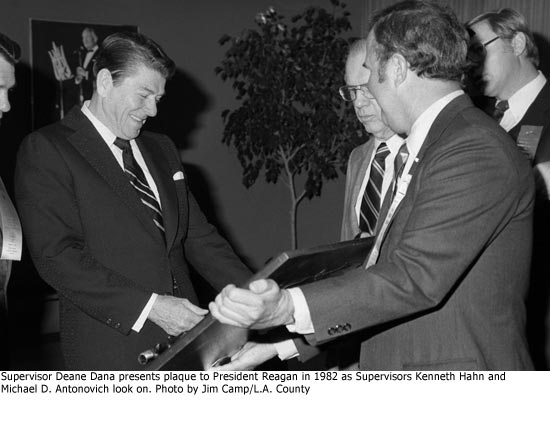






 Check for the latest closure information
Check for the latest closure information








